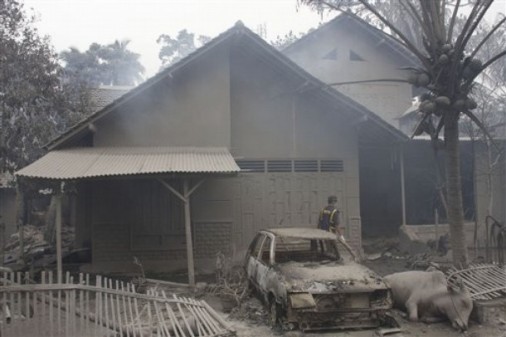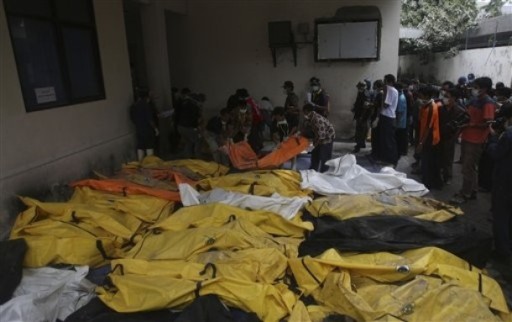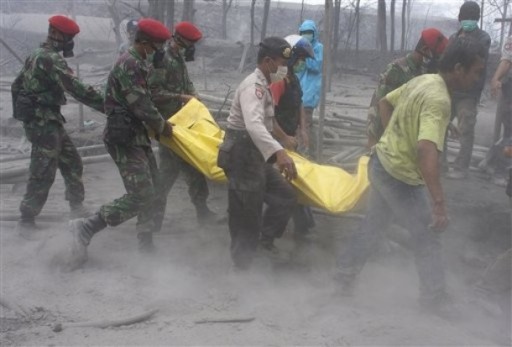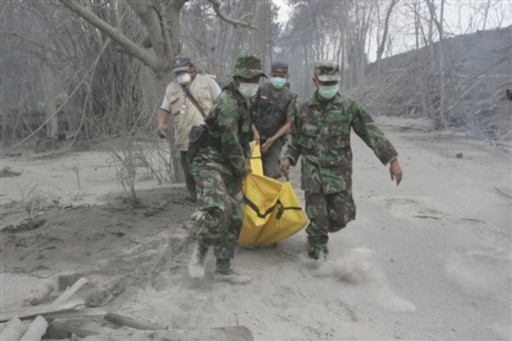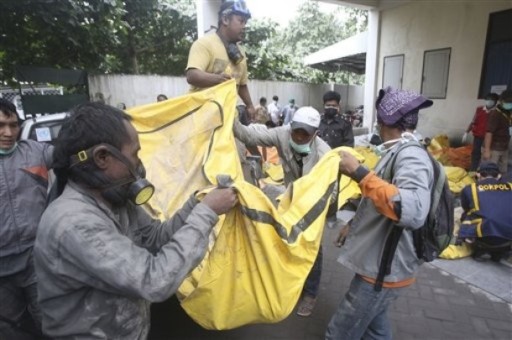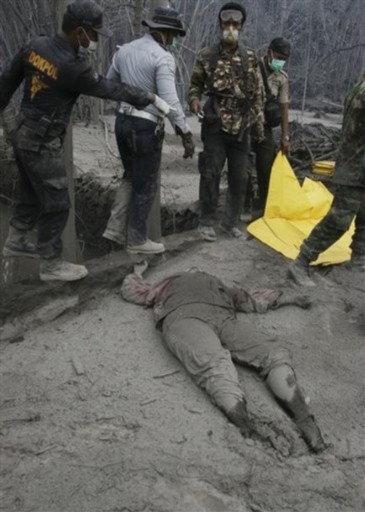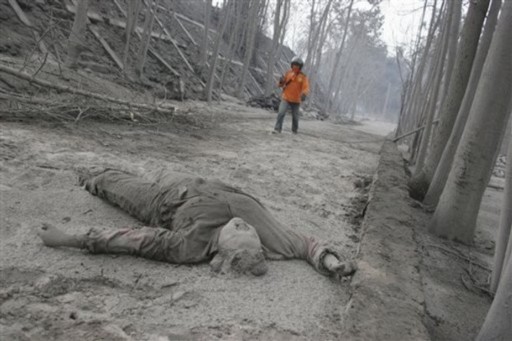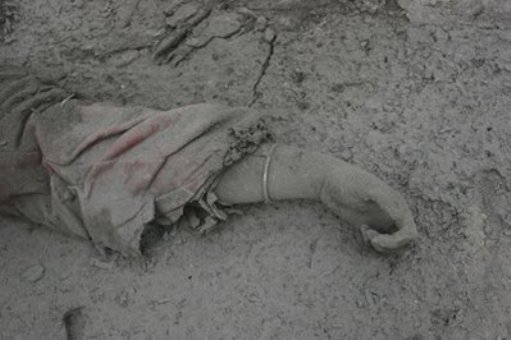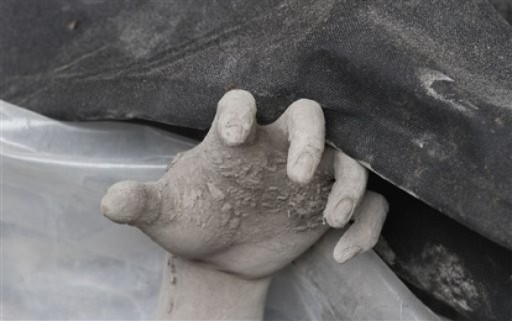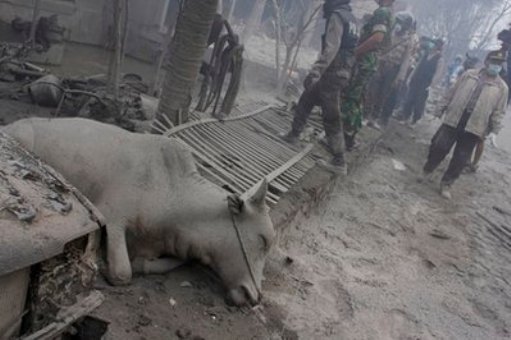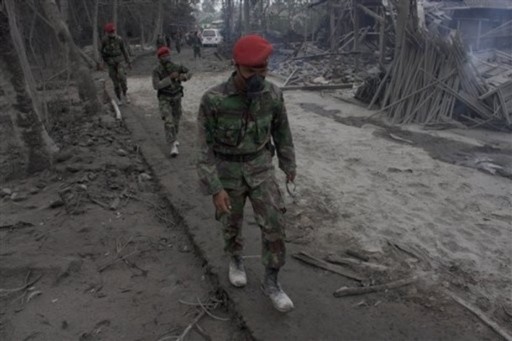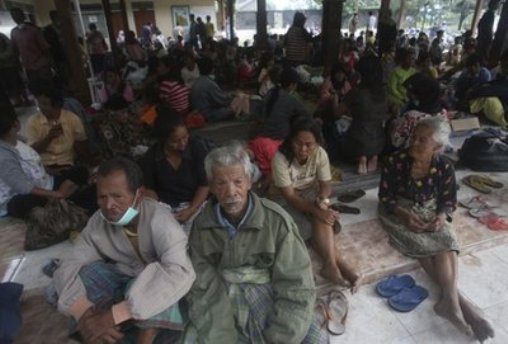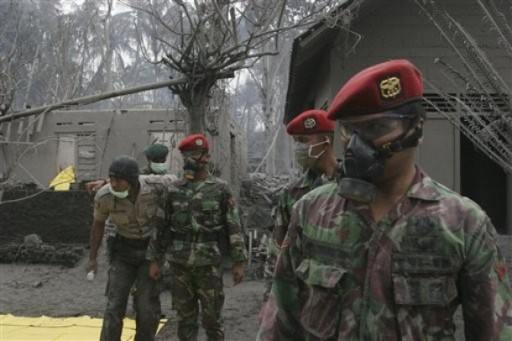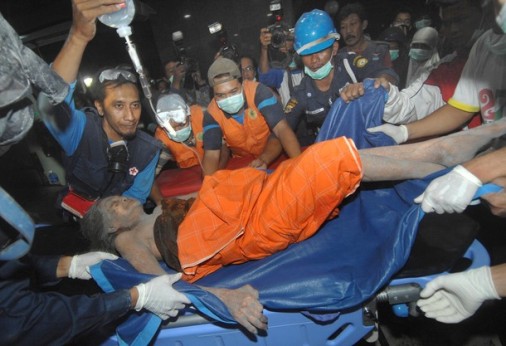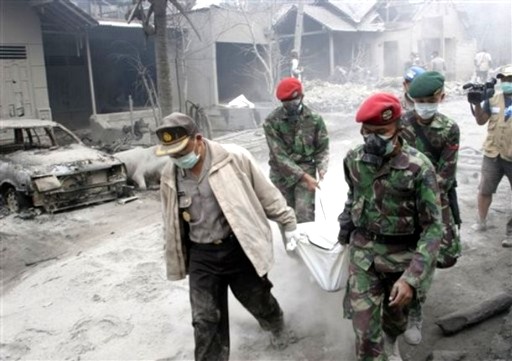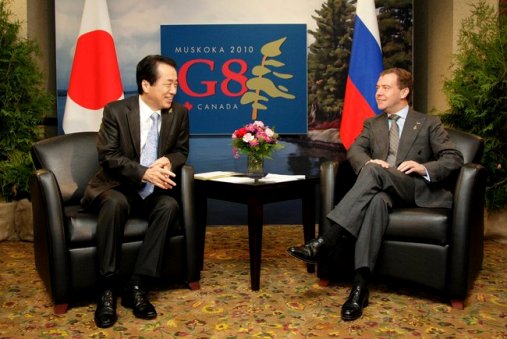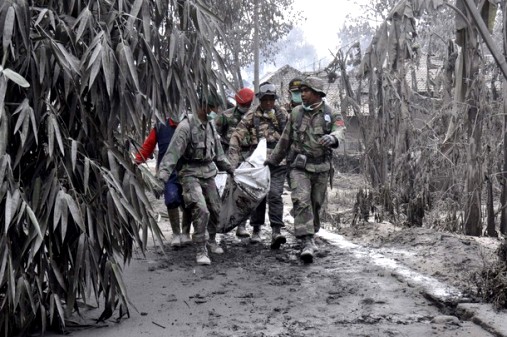
- Soldiers carry a body from Argomulyo village in Indonesia's Sleman district of Central Java province November 5, 2010. Indonesia's Mount Merapi volcano erupted with renewed ferocity on Friday, killing another 54 people and blanketing the surrounding area with ash. Ten days of eruptions have now killed nearly 100 people and forced the evacuation of more than 75,000. REUTERS/Stringer
November 05, 2010 (KATAKAMI / THE JAKARTA POST) --- President Susilo Bambang Yudhoyono announces he will closely monitor the situation of Mount Merapi from Yogyakarta as the volcano's three major eruptions early on Friday have brought the death toll to some 100.
Yudhoyono said after a coordination meeting with some Cabinet ministers, the Indonesian Military (TNI) chief and the National Police chief at the Presidential Office in Jakarta he would come back to Yogyakarta on Friday evening and may stay in the presidential palace there to lead the disaster mitigation efforts. The president visited Yogyakarta and neighboring Magelang only on Tuesday and Wednesday to meet with people seeking refuge from the disaster.
Presidential spokesman Julian Aldrin Pasha said the president might move to the Military Academy in Magelang if Yogyakarta was uninhabitable, and that the length of his stay would depend on the development of the situation.
Yudhoyono also announced several instructions in a press conference after the meeting, including that all emergency activities would be under the sole command of National Disaster Mitigation Agency (BNPB) head Syamsul Maarif, whose status has been lifted to a ministerial level.
"Although the Yogyakarta and Central Java administrations still function, seeing the scale of the disaster it is better than BNPB head takes the command with assistance from Yogyakarta and Central Java governors, Diponegoro Military Command chief, and Central Java and Yogyakarta police chiefs," Yudhoyono said.
He added that he had instructed Coordinating Minister for People's Welfare Agung Laksono to organize humanitarian relief for Merapi refugees, and the TNI to dispatch a brigade to help build temporary hospitals and emergency kitchens, as well as evacuate people.
The president also announced the government would allocate budget to buy cattle belonging to the locals at agreeable prices, saying it was expected to lure them not to return to their homes to take care of the animals after evacuation order was issued. He assigned Agung and the Yogyakarta and Central Java governors to deal with the matter.
Concluding the press conference, Yudhoyono asked journalists and the nation to pray for the safety of people around the volcano and an end of the calamity. (*)
